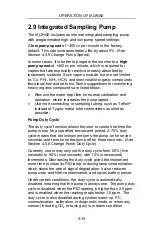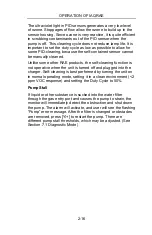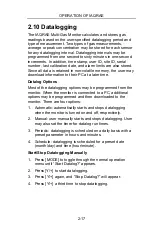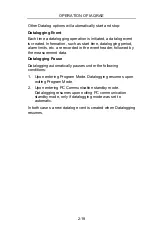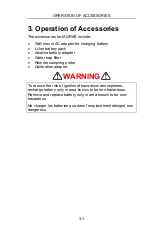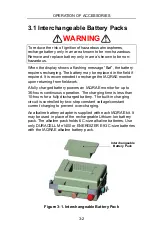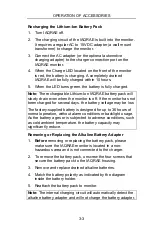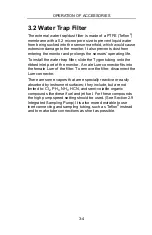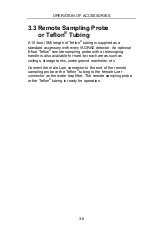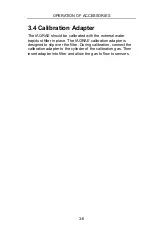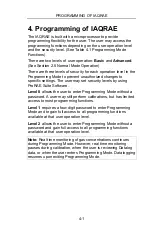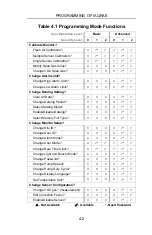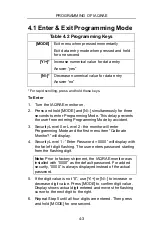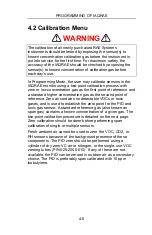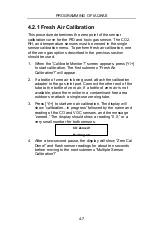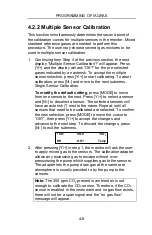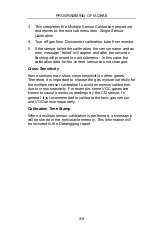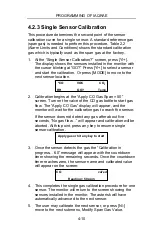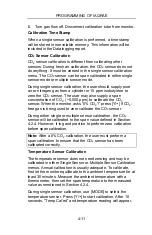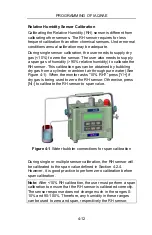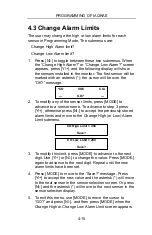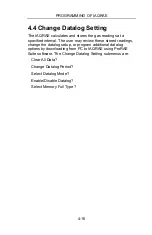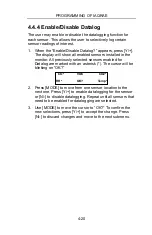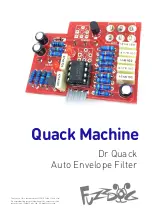
PROGRAMMING OF IAQRAE
4-5
4.2 Calibration Menu
WARNING
The calibration of all newly purchased RAE Systems
instruments should be tested by exposing the sensor(s) to
known concentration calibration gas before the instrument is
put into service for the first time. For maximum safety, the
accuracy of the IAQRAE should be checked by exposing the
sensor(s) to known concentration of calibration gas before
each day’s use.
In Programming Mode, the user may calibrate sensors in the
IAQRAE monitor using a two-point calibration process with
zero or low concentration gas as the first point of reference and
a standard higher concentration gas as the second point of
reference. Zero air contains no detectable VOCs or toxic
gases, and is used to establish the zero point for the PID and
toxic gas sensor. A standard reference gas (also known as
span gas) contains a known concentration of a given gas. The
two-point calibration procedure is detailed on the next page.
Zero calibration should be done before performing span
calibration of single or multiple sensors.
Fresh ambient air cannot be used to zero the VOC, CO2, or
RH sensors because of the background presence of these
components. The PID zero should be performed using a
cylinder of dry zero-VC air or nitrogen, or the single-use VOC
zeroing tubes (P/N 025-2000-010). If any of these are not
available, the PID can be zeroed in outdoor air as a secondary
choice. The PID is preferably span calibrated with 10 ppm
isobutylene.

